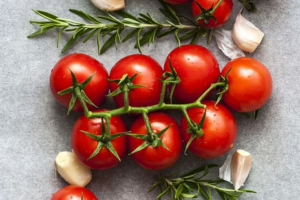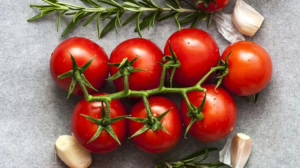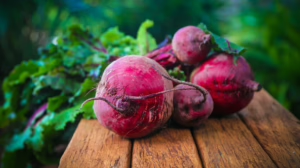Fuel Your Body: 15 Nutritious Foods for Every Meal
Maintaining a balanced diet is essential for overall health, vitality, and well-being. Navigating the wide array of food choices available today can be overwhelming. This article highlights 15 nutritious foods that you can incorporate into your meals for improved energy, health, and satisfaction. Each of these foods offers unique benefits, and we will explore how to include them in your daily diet.
1. Quinoa
Quinoa is a whole grain that is considered a superfood because of its impressive nutrient profile. It is high in protein, fiber, and various vitamins and minerals. Quinoa is a complete protein, providing all nine essential amino acids, making it an excellent choice for vegetarians and vegans.
How to Use:
- Salads: Add cooked quinoa to salads for a protein boost.
- Breakfast: Use it as a base for breakfast bowls, topped with fruits and nuts.
- Side Dish: Serve it as a side dish seasoned with herbs and lemon.
2. Spinach
Spinach is loaded with vitamins A, C, and K, as well as folate and iron. This leafy green is low in calories while being incredibly nutrient-dense, making it a powerhouse for maintaining good health.
How to Use:
- Smoothies: Blend fresh spinach into your smoothies for added nutrients.
- Sautés: Sauté with garlic and olive oil as a flavorful side.
- Salads: Use fresh spinach as a base for salads, mixing in a variety of vegetables.
3. Salmon
Salmon is known for its high omega-3 fatty acid content, which promotes heart health, reduces inflammation, and supports brain function. It’s also an excellent source of protein.
How to Use:
- Grilled: Grill salmon with a marinade for a delicious meal.
- Salads: Flake cooked salmon into salads for added protein.
- Breakfast: Consider a smoked salmon on whole-grain toast for a nourishing breakfast.
4. Berries
Berries, such as blueberries, strawberries, and raspberries, are rich in antioxidants, vitamins, and minerals. They can help reduce the risk of chronic diseases and improve heart health.
How to Use:
- Snacks: Enjoy mixed berries as a healthy snack.
- Breakfast: Top Greek yogurt or oatmeal with a serving of berries.
- Dessert: Use berries in smoothies or as a topping for desserts.
5. Sweet Potatoes
Sweet potatoes are high in fiber, vitamins A and C, and various antioxidants. They are great for maintaining stable blood sugar levels and providing long-lasting energy.
How to Use:
- Roasted: Roast sweet potato wedges with olive oil and spices.
- Mashed: Use mashed sweet potatoes as a side dish.
- Fries: Create healthy sweet potato fries baked in the oven.
6. Greek Yogurt
Greek yogurt is rich in protein, calcium, and probiotics that benefit gut health. It can be used in both sweet and savory dishes and makes for an excellent snack.
How to Use:
- Breakfast: Top with fruit and honey for a satisfying breakfast.
- Dips: Use it as a base for healthier dips and spreads.
- Smoothies: Blend into smoothies for added creaminess and protein.
7. Lentils
Lentils are an excellent source of plant-based protein and fiber. They are also rich in iron, folate, and other essential nutrients, making them a healthy choice for overall wellness.
How to Use:
- Soups: Incorporate into soups for added protein and fiber.
- Salads: Use cooked lentils in salads to enhance texture and nutrition.
- Curries: Combine with spices to make delicious curries.
8. Avocado
Avocados provide healthy fats, fiber, and a variety of vitamins and minerals. They are also known for their heart-healthy monounsaturated fats that can help lower cholesterol levels.
How to Use:
- Toast: Spread avocado on whole-grain toast and top with eggs.
- Salads: Add diced avocado to salads for creaminess.
- Smoothies: Blend into smoothies for a creamy texture.
9. Eggs
Eggs are a great source of high-quality protein, healthy fats, and various vitamins and minerals, including vitamin D and choline. They are versatile and can be included in numerous meals.
How to Use:
- Breakfast: Prepare scrambled eggs or omelets with vegetables.
- Salads: Add hard-boiled eggs to salads for extra protein.
- Baking: Use eggs in baking for structure and moisture.
10. Nuts and Seeds
Nuts and seeds are nutrient-dense snacks that provide healthy fats, protein, and fiber. They are also packed with vitamins and minerals. Almonds, walnuts, chia seeds, and flaxseeds are great options.
How to Use:
- Snacks: Enjoy raw or roasted nuts as a snack.
- Toppings: Sprinkle seeds on oatmeal or yogurt.
- Baking: Incorporate into baked goods for added texture.
11. Broccoli
Broccoli is a cruciferous vegetable that is high in vitamins K and C, fiber, and various antioxidants. It’s known to have cancer-fighting properties and supports healthy digestion.
How to Use:
- Steamed: Steamed broccoli can be a delicious side dish.
- Stir-Fries: Add to stir-fries for color and nutrition.
- Soups: Blend cooked broccoli into soups for a creamy base.
12. Chickpeas
Chickpeas are high in protein and fiber, making them excellent for maintaining satiety and promoting digestive health. They are versatile and can enhance a wide variety of dishes.
How to Use:
- Hummus: Blend with tahini and lemon juice for a healthy dip.
- Salads: Add canned or cooked chickpeas to salads for protein.
- Soups: Use in soups or stews for added heartiness.
13. Oats
Oats are a whole grain that is particularly high in soluble fiber, which can help lower cholesterol levels and regulate blood sugar. They’re also a great source of energy.
How to Use:
- Breakfast: Enjoy as oatmeal, topped with fruits and nuts.
- Baking: Use in baking cookies or bars for added fiber.
- Smoothies: Blend into smoothies for thickness and nutrition.
14. Bell Peppers
Bell peppers are rich in vitamins A and C, carotenoids, and various antioxidants. They can boost the immune system and support skin health.
How to Use:
- Salads: Add raw bell peppers to salads for crunch.
- Stir-Fries: Include in stir-fries for flavor and vibrancy.
- Stuffed: Stuff bell peppers with grains or meat for a hearty meal.
15. Brown Rice
Brown rice is a whole grain that provides more fiber, vitamins, and minerals compared to white rice. It can help with digestion and is a heart-healthy carbohydrate choice.
How to Use:
- Main Dish: Use as a base for main dishes or grain bowls.
- Stir-Fries: Incorporate into stir-fries for a hearty meal.
- Salads: Add cold brown rice to salads for texture and nutrition.
Conclusion
Incorporating a variety of nutritious foods into your meals can help you fuel your body and support your health. From grains and proteins to vegetables and healthy fats, the 15 foods highlighted in this article can provide a solid foundation for a balanced diet. Experiment with different combinations to discover meals you enjoy, and remember that nutrition is not one-size-fits-all; listen to your body and adjust as needed.
Eating a balanced diet of whole, nutritious foods can greatly improve your energy levels, mood, and overall health. Don’t hesitate to explore new recipes and cooking methods to keep your meals exciting and nutritious. Start today by including these foods in your diet, and take one step closer to a healthier you!
[modern_footnote_source]: For further information on the nutritional benefits of these foods, please refer to available nutrition and health-related research articles, food and nutrition databases, and trusted health organizations.


























Add Comment